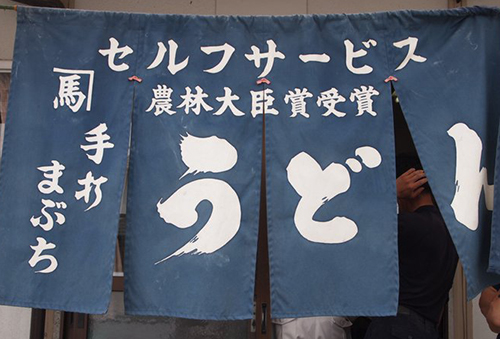131. The "Minister (of State)" Radical: 臣
The "minister (of state)" radical 臣 resembles a segment of a brick wall. I never fail to admire the neatly offset "mortar joints." That means I also love the look of this Joyo kanji, which is identical to the radical:
臣 (512: servant)
To my surprise, this rectilinear shape actually symbolizes round objects! I don't mean that the servant in question is rotund. Rather, here's the etymology Henshall provides in his newer edition:
The 臣 shape depicts an "eye with exaggeratedly large pupil." He says that scholars take 臣 to mean "eyeball," typically treating senses such as "servant, retainer" as loan usages. One expert views those abstract senses as extended usage with the basic meaning "one who watches and looks after things on behalf of higher authority"—hence, the range in status from "servant" through "minister."
That is a world apart from a brick wall!
Aside from that character, only one other Joyo kanji features 臣 as an on-duty radical:
臨 (994: to face; attend; present)
Here, too, the character involves gazing, according to the etymology from the same source:
The 臨 shape combines the non-Joyo 臥 (to look down) and 品 (goods). Scholars typically perceive this 品 as a phonetic with the associated sense "water's edge," which makes 臨 mean "look down from cliff near water's edge." That then generalized to "look down" with the associated meanings "verge on; attend." Another scholar rejects this analysis, seeing 臥 + 品 as leading 臨 to represent "to look down (from a platform or similar) on merchandise."
As these interpretations of 臨 involve the non-Joyo 臥, which Henshall doesn't explore separately, the explanations don't afford a satisfying understanding of what 臣 truly means in 臨. I suppose we should content ourselves with knowing that what looks like a brick wall truly symbolizes an eye with an enormous pupil!
The Names of the 臣 Radical
The 臣 (512: servant) kanji carries the Joyo on-yomi シン, so it makes sense that the Japanese refer to the 臣 radical as しん.
Then there's the matter of the English radical names. The one I prefer is "minister (of state)," which is clearly a government position. There's also "retainer," which sounds orthodontic to me, though the word can also refer to a fee for securing professional services. Neither sense applies here. Rather, in a Japanese context, a "retainer" is a "skilled servant who attends to the needs of a member of the royal family or a noble person." That is the pertinent meaning here. To avoid confusion, I'll stick with "minister (of state)" as the radical name.

The 臣 shape is front and center, though split up the middle! It's in a line that breaks down as follows:
農林大臣 (のうりんだいじん: Minister of Agriculture and Forestry)
-賞 (-しょう: award)
受賞 (じゅしょう: winning (a prize))
So the restaurant (which no longer exists) won an award from that ministry, whose name is now obsolete, having been replaced by 農林水産省 (のうりんすいさんしょう: Ministry of Agriculture, Forestry and Fisheries). A minister from that department is now called 農林水産大臣 (のうりんすいさんだいじん: Minister of Agriculture, Forestry and Fisheries).
On the left side on this noren (curtain) for a self-service udon place called 馬渕製麺所 (まぶちせいめんじょ), we see a 馬 (the first kanji in the restaurant name) in a bracket of sorts; together they constitute a logo. Below that we find these words:
手打 (てうち: making noodles by hand)
まぶち (馬渕: a surname (probably the founder's)), where 渕 is non-Joyo
Sticky Stroke Count
Japanese schools teach kids that the 臣 kanji has seven strokes. When this shape pops up inside other characters, it still has seven. Take, for example, kanji such as these (in which 臣 serves as a mere component):
堅 (1217: firm)
臣 (7 strokes) + 又 (2 strokes) + 土 (3 strokes) = 12 strokes
姫 (1738: princess)
女 (3 strokes) + 臣 (7 strokes) = 10 strokes
Originally, though, 臣 had six strokes. The shape hasn't changed, but people drew the leftmost vertical and bottom horizontal strokes as a continuous line. Nowadays, teachers have kids separate those two strokes, turning 臣 into a seven-stroke character and radical. On Joy o' Kanji, I therefore treat 臣 as having seven strokes.
